How and with what to clean a bathtub from potassium permanganate?
Potassium permanganate solution is not used as widely as before, but it is still popular for bathing babies and for skin diseases. Home treatment procedures are not difficult to do; it can be more difficult to clean the bathtub from potassium permanganate.
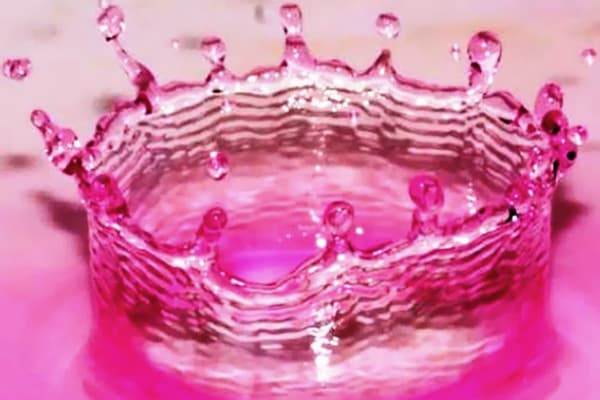
General rules
What do you need to deal with stains on the walls of the bathtub?
- Clean immediately after draining the solution - the shorter the exposure time, the easier it is to clean.
- Have a few homemade and store-bought products in stock so you don’t have to look for something to clean your bathtub with.
- Do not allow splashes to get on the seams of the tiles - they will be more difficult to clean than a smooth surface.
It is important to consider the material from which the bathtub is made. Acrylics are the most capricious and require gentle cleaning.
How to clean a bathtub?
Plaque on the walls can be erased in several different ways. Abrasive agents are used only for cast iron or enamel bathtubs; acrylic bathtubs are cleaned with liquid compounds. To wash off potassium permanganate from the bath, you need to prepare everything you need in advance. Fresh marks are easier to wipe off.
What will help wash off potassium permanganate?
- Vinegar 9% or higher concentration.
- Hydrogen peroxide.
- Soda.
- Ready-made cleaning compositions: cream, powder or paste.
- Bleach: oxygen or chlorine.
For washing you will need rubber gloves and a sponge. A mask may be required because some products have a strong odor.
Vinegar and peroxide
After the water with the permanganate solution has been drained, you can begin cleaning. It is necessary to open the door for ventilation, since when cleaning with vinegar, concentrated vapors can cause burns to the respiratory tract.
Next you should proceed like this:
- Rinse the bath with water and wipe, removing any remaining potassium permanganate.
- Apply acetic acid to a sponge and rub.
- Rinse the walls thoroughly.
- If necessary, repeat processing.
When washing with vinegar, be sure to wear gloves and a mask, and the door to the bathroom must be open.
Abrasives
You can wash off potassium permanganate from a cast iron or enamel bath with soda or store-bought cleaning compounds - powder, cream, and pastes. For this you need a sponge with a hard side and gloves. The method is more labor-intensive and time-consuming than using vinegar or peroxide, since to wash the walls you will have to put in some effort and scrub thoroughly.
"Whiteness" and oxygen bleach
On the Internet you can find another method of cleansing - soaking. Draw a bath, fill it with a solution of chlorine or oxygen bleach overnight, and wash it in the morning.
The method is unlikely to be suitable for everyday use. Its disadvantages:
- duration;
- high water consumption;
- inhalation of chlorine fumes is harmful to health;
- There is a risk that children and pets will get to the cleaning solution.
However, if the walls of the bathtub are covered with stubborn plaque that could not be removed otherwise, soaking with a concentrated solution can whiten the surface. When using this method, it is important to ensure safety - ventilation, thorough rinsing after draining. Be sure to limit access to the bathroom for children and pets.
Baby bath - special care
If your baby will be bathing in potassium permanganate, it is better to buy a small plastic or enamel bath. The consumption of water and permanganate is less, and washing a small bath after treatment procedures is faster and easier.
It is preferable to choose a light color - dirt is immediately visible on such products.
It is better to clean a baby’s bath with home remedies – vinegar or soda. Be sure to rinse well after washing.
To help housewives
In order not to spoil the bathtub, and also not to waste extra time and effort on cleaning, you must follow several rules:
- Permanganate must be dissolved in a separate container so that small crystals do not get into cracks or surface irregularities. Otherwise, they will cause staining that will be difficult to remove.
- In the treatment of fungal and genitourinary diseases, the pelvis can be used.
- It is necessary to drain the solution from a basin or baby bath gradually, without splashing, so that you do not have to wash two containers.
- It is important to follow safety precautions and not mix detergents: a chemical reaction with the release of vapors can cause burns, eye and respiratory tract irritation.
- Be sure to use gloves, a mask, and wash in a ventilated area.
- Abrasive and highly concentrated products are only permissible for cast iron, enameled bathtubs. Acrylic surfaces should not be rubbed with powder or a stiff brush, even if other means have not helped: this will hopelessly damage the material.
- Household chemicals should be stored out of the reach of children and hidden immediately after cleaning.
If, as a result of treatment procedures with potassium permanganate, the acrylic surface is damaged and it is impossible to wash it, you will have to buy a kit for repairing such products - it will restore the whiteness and also extend the service life of the bathtub.
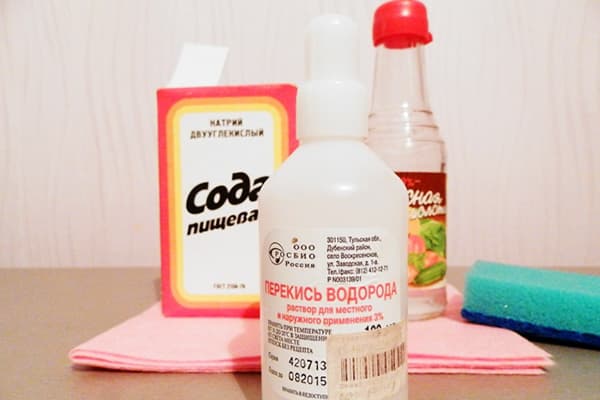
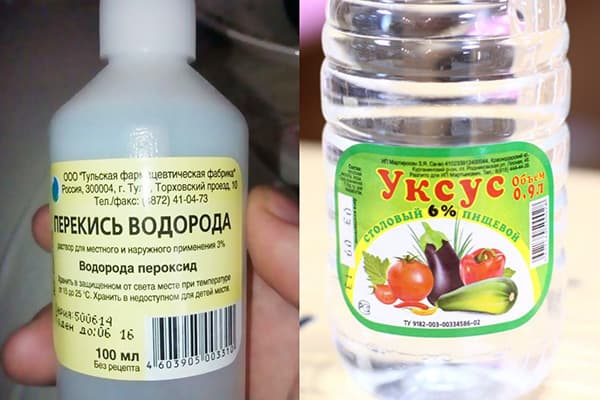
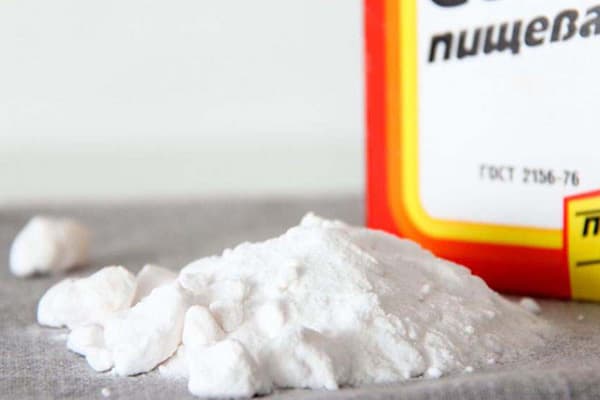
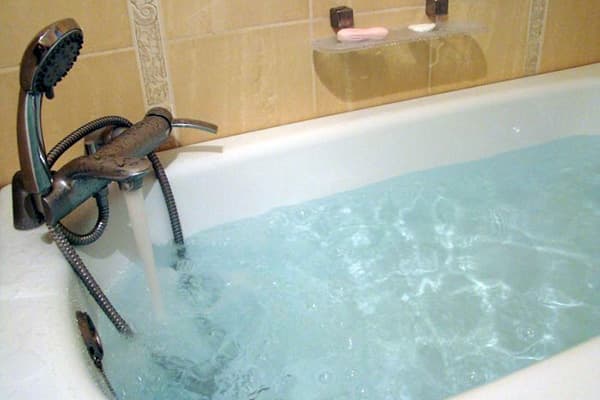
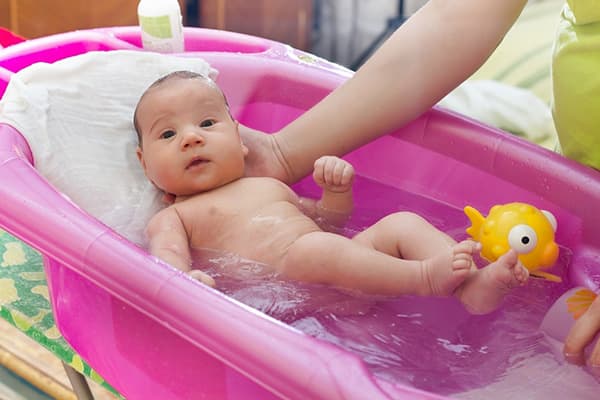
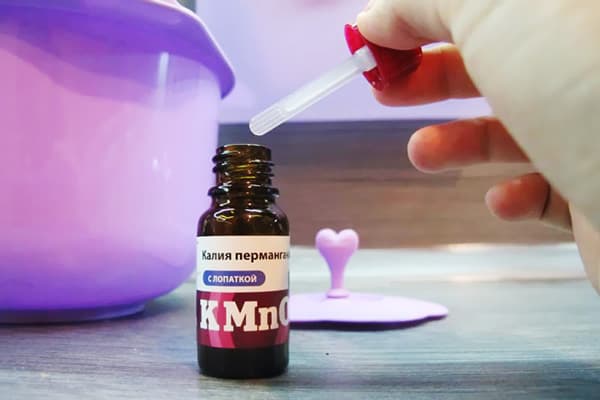
A great way to use hydrogen peroxide. It's cheap and removes potassium permanganate from a baby's bath well. And you don’t have to worry about whether the peroxide has been washed off well from the bath, unlike store-bought chemicals.